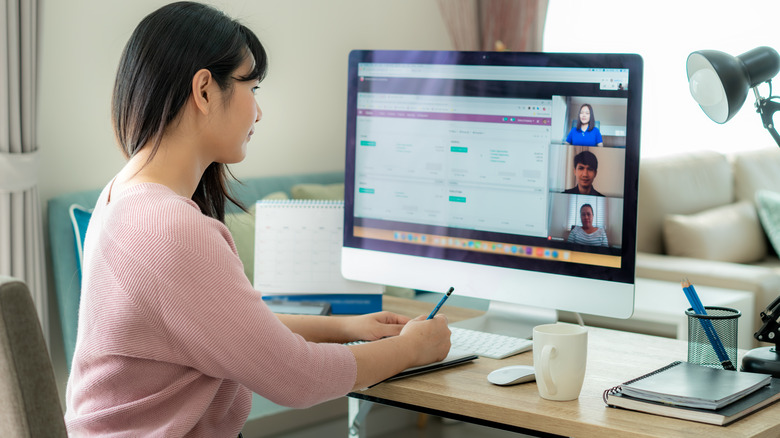Computer Settings That Can Positively Affect Your Health At Work
Let's face it: Many people spend hours on their computers working, regardless of whether we're in the office or working remotely. Spending a lot of time on the computer is inevitable, and how we position ourselves when doing so can lead to aches and pains. It can then be tempting to bring your laptop to bed or work on the couch, but over time, this can have a detrimental effect on your posture, which you may want to fix.
According to Healthline, working in bed can negatively affect the quality of your sleep as well as your productivity. Moreover, according to Inc., setting physical boundaries, such as having a designated space for work, can help you be in a better mindset to create a mental boundary and therefore focus at work. We know that es1tablishing an office space at home can help you work better, but so can changing the settings on your computer. These settings can have a surprising influence on your productivity and mental health, so it's worth updating them if you haven't since you began working remotely.
These changes to your computer settings can have positive effects
As our world becomes more interconnected than ever, we are constantly exposing ourselves to digital devices that can strain our eyes. Computer vision syndrome can arise from this, with symptoms such as headaches, blurred vision, and dry eyes (via Kaspersky). To reduce eyestrain, you can increase your computer's text size, and reduce overhead lighting to decrease screen glare.
Another helpful suggestion to sleep better if you spend a lot of time working on your computer is to dim the screen as much as possible for evening use. It can also be helpful to install a blue light filter software. The increase in orange tones doesn't affect melatonin levels like blue tones do and helps you get a good night's rest. Help Desk Geek recommends software like Iris mini and Redshift that reduce the color temperature and brightness of your screen, so you can work more efficiently. These programs reduce blue light levels while increasing orange light levels, which eases eyestrain. Both Iris mini and Redshift work on Windows, Linux, and Mac.
Finally, the University of North Carolina suggests investing in a polarized glare screen to reduce strain on your eyes, reduce the brightness, and increase visibility on the monitor. Just make sure to take a break every 15-20 minutes, stand up and stretch, and add cardiovascular exercise to your lifestyle.

